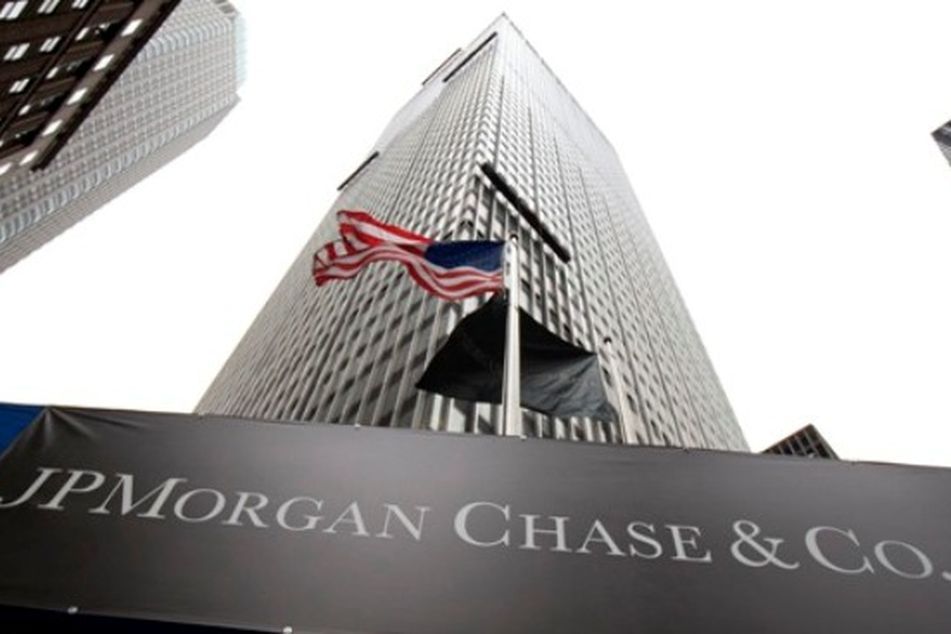J.P. Morgan places massive bet on mortgages

Bank plunking down on securities tied to home loans outside the U.S.; a little more yield
JPMorgan Chase & Co. (JPM) has more than tripled its holdings of mortgage securities without U.S. government guarantees to $72 billion as the nation’s biggest bank bets on borrowers from outside the country it calls home.
The investments swelled $8.4 billion in the fourth quarter, climbing from $52.8 billion at the end of 2010 and $19 billion the prior year, according to regulatory data released last week. The bank has primarily been adding debt from outside the U.S., including bonds tied to U.K. and Dutch mortgages, Securities and Exchange Commission filings by New York-based JPMorgan show.
“The bet is they can get a little more yield in areas where they think that they’re safe,” said Jim Leonard, an analyst at Morningstar Inc. in Chicago who covers the bank’s debt. While mortgage bonds carry a stigma after fueling the worst financial crisis since the 1930s, “that can be a little unfair” because many were repaid in full, he added.
JPMorgan Chief Executive Officer Jamie Dimon added the securities even as U.K. economic growth slows toward zero, the Dutch property market slumps for a third year and Europe’s leaders try to stem the region’s sovereign-debt crisis. The bank may be benefiting as bailed-out lenders such as Royal Bank of Scotland Group Plc (RBS) and ING Groep NV (INGA) are forced to contract, said Brad Golding, managing director at Christofferson, Robb & Co.
“All of those guys want to shrink their balance sheets,” said Golding, whose New York-based hedge fund manages about $1.4 billion and invests in financial-company credit. At the same time, the U.S. Federal Reserve’s “massive” buying of government-backed mortgage bonds has made those securities relatively less attractive by pushing down yields, he said.
Justin Perras, a spokesman for JPMorgan, declined to comment.
Contrasting Strategy
The lender’s buying contrasts with the rest of the biggest U.S. banks. Competitors are trimming holdings of so-called non- agency mortgage bonds such as U.S. subprime securities that sparked the housing meltdown, and expanding portfolios of agency notes guaranteed by government-supported Fannie Mae and Freddie Mac or U.S.-owned Ginnie Mae.
JPMorgan last year shrunk its investments in U.S. agency mortgage securities by $28.1 billion to $134.7 billion, according to data compiled by SNL Financial, a Charlottesville, Virginia-based financial-information and research provider.
The rest of the top-25 banks, including Bank of America Corp. (BAC) and Citigroup Inc. (C), increased their agency portfolios by $121.1 billion to $947.8 billion as their non-agency investments fell $31.6 billion to $98.6 billion, according to data assembled by SNL from regulatory reports.
Net Interest Margin
While banks are benefiting from record low costs being paid on deposits, they’re facing a squeeze on net interest margins. That’s the difference between what they pay to borrow money and what they get for loans and on securities. JPMorgan’s margin narrowed to 2.7 percent last quarter from 2.88 percent a year earlier.
The Fed, while holding its target for short-term interest rates near zero, has contributed to depressing yields by buying bonds to support the economy. It bought $1.25 trillion of agency mortgage securities from January 2009 through March 2010 and in October started to use proceeds from the holdings to buy more.
JPMorgan purchased 1.28 billion euros ($1.7 billion) of top-rated bonds backed by Dutch home loans from Amsterdam-based ING in November, according to a person with knowledge of the deal. It also bought part of a $5.5 billion offering in October tied to U.K. loans originated by RBS and National Westminster Home Loans, said a banker familiar with that transaction. They declined to be identified because terms weren’t public.
Taxpayer Money
ING, the biggest Dutch financial-services firm, sold its U.S. online bank last week to McLean, Virginia-based Capital One Financial Corp. as a condition of its government bailout, while RBS is shrinking after an injection of 45.5 billion pounds ($71.3 billion) of taxpayer money.
In the RBS deal, JPMorgan bought top-rated debt with a projected average life of 2.8 years, according to one of the people. The bonds sold at yields that are 1.6 percentage points more than the three-month London interbank offered rate, a floating benchmark set yesterday at 0.49 percent.
These types of bond investments can address the “two problems money managers are facing right now — the fear of higher rates and the absolute low level of rates,” said John Kerschner, head of securitized products at Janus Capital Group Inc., which manages about $160 billion of assets.
Fannie Mae Yields
While yields on newly issued Fannie Mae mortgage securities averaged 3.18 percent in October, the debt’s expected life was more than two years longer than the RBS notes and can extend as homeowner refinancing drops, according to data compiled by Bloomberg. That leaves investors more exposed to the risk of rising interest rates.
Yields on slices of repackaged agency mortgage debt that protect investors from higher rates by limiting maturities averaged 1.22 percent in October, according to Bank of America Merrill Lynch’s 0-3 Year PAC Agency CMO index.
JPMorgan had $2.27 trillion of assets as of Dec. 31, up from $2.12 trillion a year earlier. Securities holdings, excluding trading assets, climbed $48.5 billion to $364.8 billion, and loans rose $30.8 billion to $723.7 billion as the economic recovery slowed, limiting demand.
The bank held $57.5 billion of residential-mortgage securities tied to loans outside the U.S. and $2.3 billion of bonds backed by so-called prime and Alt-A (BBMDADLQ) U.S. loans on Sept. 30 in the available-for-sale accounting designation, according to an SEC filing. Under that category, changes in the values aren’t reflected in earnings. The prime and Alt-A investments were down from almost $7 billion at the end of 2008, while the non-U.S. mortgage debt rose from $2.1 billion, an earlier filing showed.
Unrealized Losses
The bank had unrealized losses of $530 million on those overseas bonds, “substantially all” of which stemmed from securities with ratings of AAA, AA or A from the U.K. and Netherlands, according to its third-quarter filing, the most recent available.
Its portions of the deals can withstand losses of about 10 percent on the underlying mortgages because other classes will take writedowns first. JPMorgan said it projects lifetime losses of 1.5 percent. The so-called credit enhancement on the U.K. bonds it bought in October was 22.4 percent of losses.
Home prices in the U.K. fell 1.8 percent in the last 12 months, while unemployment is at 8.4 percent, the highest rate for 16 years, according to Halifax and government data. A push to balance the U.K.’s finances probably will reduce growth to 0.5 percent this year from 0.9 percent in 2011, according to the median forecast of economists compiled by Bloomberg.
Financial Crisis
Dutch house prices retreated 3.3 percent in the past year, while the unemployment rate jumped last month to 6 percent, the highest since February 2006, according to government figures.
Mortgage bonds outside the U.S. held up better during the global economic slowdown that deepened after Lehman Brothers Holdings Inc.’s 2008 collapse. Standard & Poor’s downgraded almost 48 percent of U.S. residential securities in 2008 and 71.7 percent in 2009, compared with 6.1 percent and 15.3 percent for their European equivalents, the rating company’s data show.
Sales of securities backed by new U.S. home loans without government backing have failed to rebound, with less than $1.5 billion of deals since mid-2008 after a record $1.2 trillion in each of 2005 and 2006, according to Bloomberg data and newsletter Inside Mortgage Finance.
Issuance of European home-loan bonds totaled 196 billion euros last year, compared with 269 billion euros in 2006, according to JPMorgan data.
Banks including JPMorgan are also struggling to find non- agency U.S. securities that might offer higher yields while carrying investment-grade ratings, which Morningstar’s Leonard said appeal to the lenders because they can set aside less capital than for lower-rated debt.
“The opportunities are relatively limited,” said Jason Callan, the head of structured products at Columbia Management Investment Advisers LLC in Minneapolis, which oversees about $170 billion in fixed-income. “Oftentimes, investment-grade bonds work their way into bank or insurance-company portfolios, which rarely trade out of those positions.”
–Bloomberg News–
Learn more about reprints and licensing for this article.






